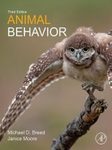By: Subir Ranjan Kundu(Author), Timothy Snow(Foreword By)
245 pages, b/w illustrations
![Spider Evolution Spider Evolution]()
Click to have a closer look
About this book
Contents
Customer reviews
Biography
Related titles
About this book
Spider Evolution: Genetics, Behavior, and Ecological Influences provides a thorough exploration of the evolutionary trail of arachnids, particularly spider species, from prehistoric origins to current sustainability issues. This book analyzes extinct organisms in the Arachnida class, specifically looking at their phylogenomics and molecular footprints to understand evolutionary changes in diversification in today's species. Sections cover spider origins and their influences on behavioral traits, physiology of sensory organs, and biomechanics, also touching on spiders as prey and predators and how their roles have changed in the 400 million years of Arachnida existence.
The book then focuses upon current environmental issues facing spider species and how these have, and can, affect the evolution of these organisms. Topics include biodiversity minimization, climate change and natural disasters. This book is a much-needed resource for entomologists and arachnid- or arthropod-driven researchers. Advanced undergraduate and graduate students will also benefit from the historic review, current assessment and future predictions of spider evolution provided in this book.
Contents
1. Introduction: A fable of the first fire, brought by the water spider from a warm glowing Island to the cold dark world of animal-people
2. An exordium to the cultural delineation of spiders
3. Spiders: The 7th ranked species on planet Earth, coming from the mythological abode of seven earth (or seven heavens)
4. Spider life span: Web-weaving with a wispy thread of silk
5. The tangled equilibrium of predator and prey: The hunter becomes the hunted
6. Evolutionary and ecological impacts of stenophagy in Araneae: Its role in promoting or limiting spider diversity on planet Earth
7. A thumbnail preview of sensuous impression versus sensual expression of the spider
8. Untangling the mystery of the origin and evolution of spiders on the planet Earth
9. Evolutionary repertoire on silk spinning by spiders: Origin and microevolution of spinnerets and role of the spidroin gene family
10. Adaptation and evolutionary changes of spiders on planet Earth against the backdrop of geological time
11. Impact of environmental parameters on the biodiversity, web formation, and niche properties of spiders
12. Shifting of environmental factors related to ecophysiological and adaptive responses of spiders
13. Biomonitoring of environmental pollution using spiderwebs
14. Effect of climate change and natural disasters: Microevolution of spiders with aggressive behavioral traits
Customer Reviews
Biography
Dr Subir R. Kundu is a senior researcher conducting extensive studies on “in situ” conservation models at the University of Calcutta in Kolkata, India. Previously, he was a senior research fellow at the Acharya Jagadish Chandra Bose Indian Botanic Gardens under the Botanical Survey of India in Howrah, India. Dr Kundu received his MSc. in botany from Kanpur University, Kanpur India, specializing in cytogenetics and plant breeding; he then received his PhD in botany from the University of Calcutta, specializing in plant geography, systematic botany, and conservation biology. He is the author of four botany and conservation-related books and numerous journal publications on conservation and evolutionary biology.
By: Subir Ranjan Kundu(Author), Timothy Snow(Foreword By)
245 pages, b/w illustrations


































